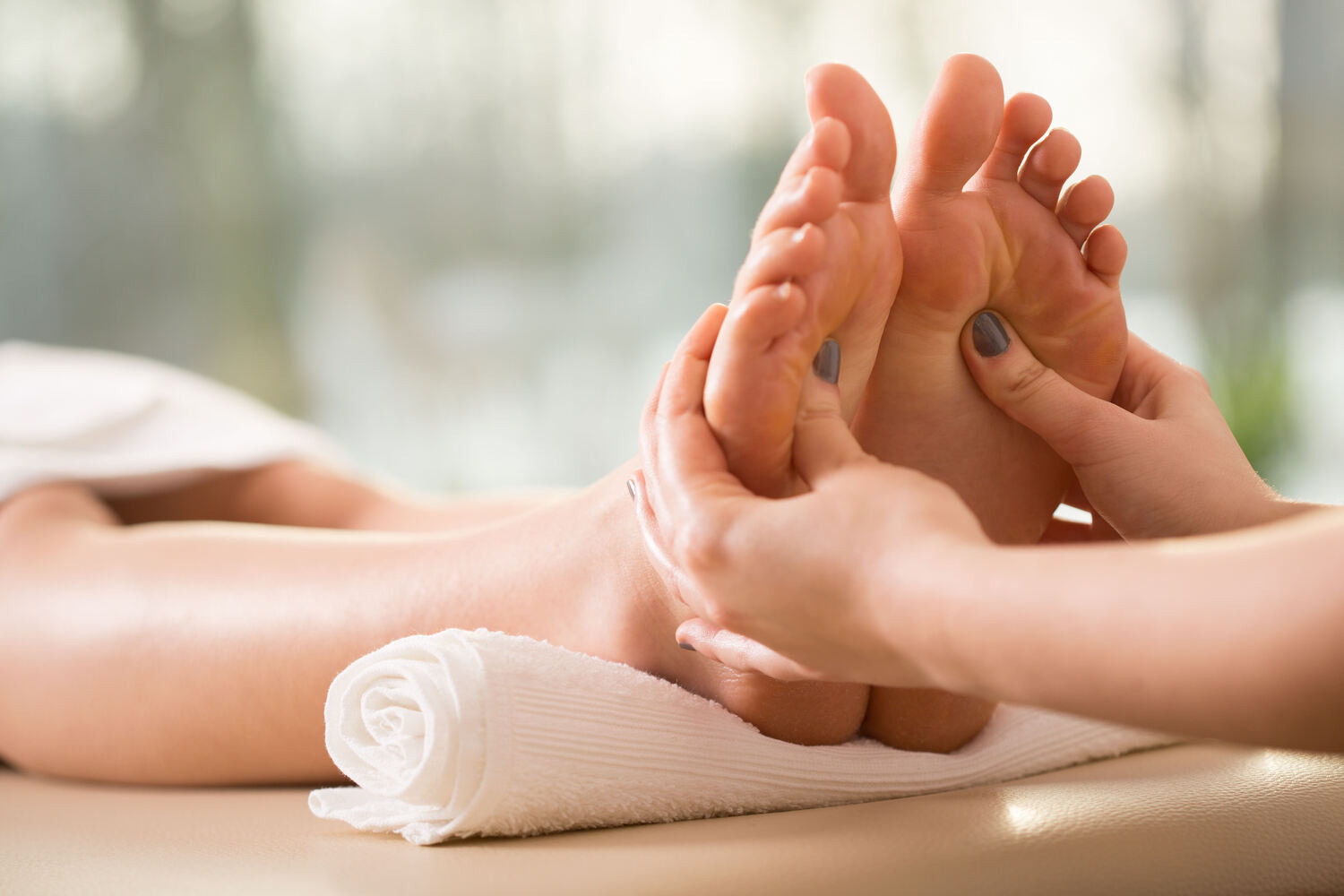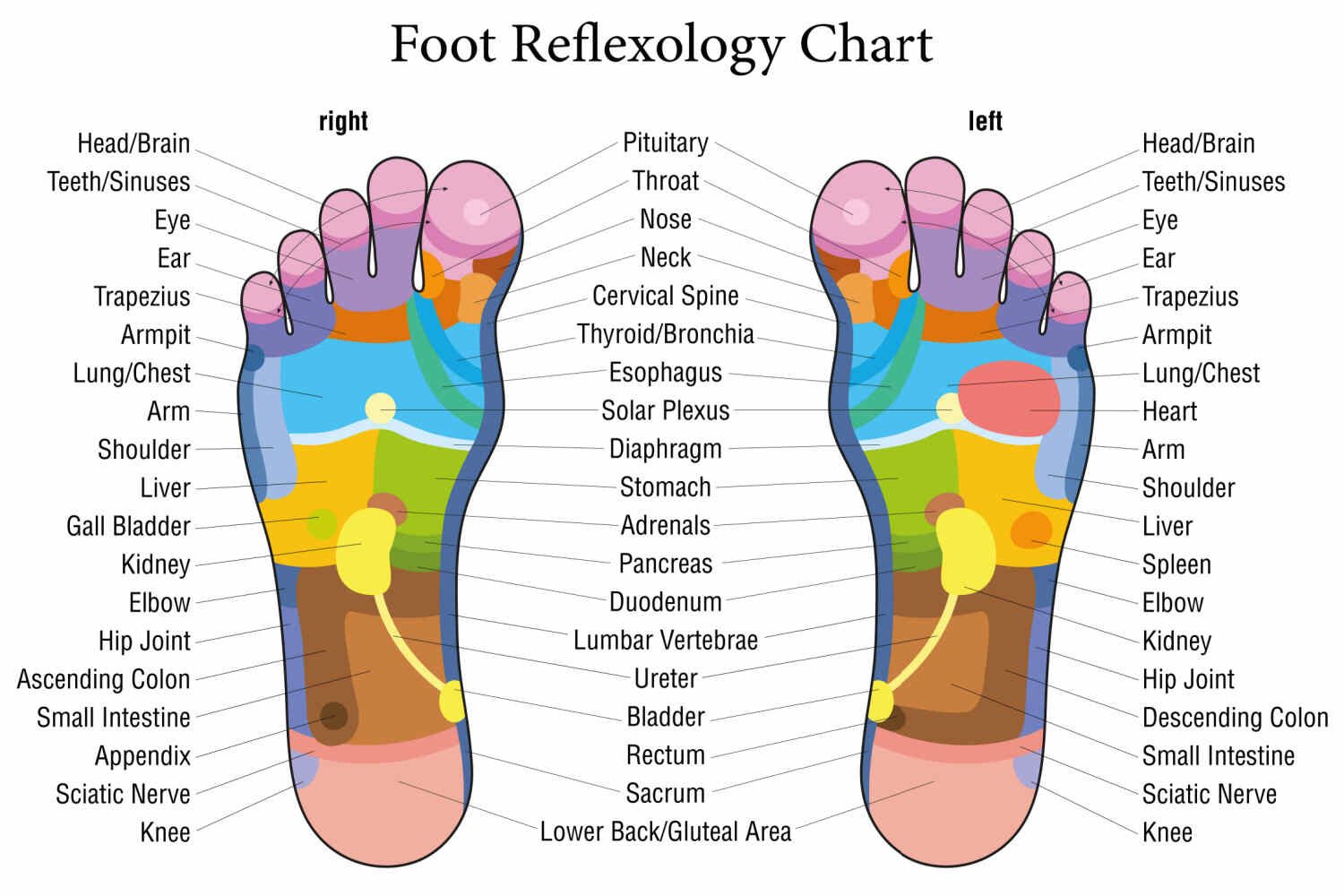
Infertility is a common condition affecting 1 in 4 couples. According to the Centers for Disease Control and Prevention, 1 in 5 married women in the United States, with no prior birth, are unable to conceive after one year of sexual intercourse. As far as infertility treatments are concerned, reflexology for fertility is one of the effective techniques that could help increase the chances of fertilization.
Although it might not be the complete cure for infertility, you may pair it with your regular treatment and medications to boost the probability of a positive pregnancy. This article will give you insights on reflexology and how it can affect the fertility rate.
In This Article
- What is Reflexology?
- Can Reflexology Help You Conceive?
- How Does Reflexology Work For Infertility?
- How Does Reflexology Work With IVF?
- Top 3 Benefits of Reflexology For Reproductive Health Problems
- Are There Any Side Effects of Reflexology For Fertility Treatment?
- FAQ’s
What is Reflexology?
Reflexology is a manual therapy or massage that involves applying pressure to the reflex points of the body, such as hands, feet, thumb, etc., to manage various health conditions (1), including infertility. The theory works on the principle that the reflex points are connected to the specific body organs, and applying adequate pressure on these points may help alleviate fertility issues by enhancing the energy flow. For instance, areas of the wrist on the top are connected to the fallopian tubes, uterus, and ovaries in females and testis in males.
Moreover, many reflexologists believe that stimulating the reflex points with this massage may enhance physical and psychological well-being, thus contributing to good reproductive health. According to NCBI research, reflexology may enhance ovulation rate and positive fertilization (2). However, more research is required to understand its efficacy with pregnancy.
Can Reflexology Help You Conceive?

You may want to consider reflexology as a part of infertility treatment. Reflexology with medications and lifestyle changes may have a positive impact on your sexual health, leading to the desired outcomes. The technique may improve poor ovulation rate, hormonal imbalance, and menstrual cycle disturbance. While planning a reflexology session, consult your healthcare provider and a renowned reflexologist to get fruitful results without complications.
How Does Reflexology Work for Infertility?
Reflexology focuses on unblocking the energy pathways and stimulating the reflex points linked to the corresponding organs. Your reflexologist puts pressure on these points primarily located on the hands and feet. This relaxes your body while helping you to sleep better. Further, it relieves stress and anxiety that may affect your fertility.
As per an NCBI study, stress and anxiety may be associated with infertility (3). However, reflexology is one of the best stress management techniques you may try with the current infertility treatment. Additionally, it’s good to visit a certified reflexologist to know the benefits the therapy can bring to you.
How Does Reflexology Work With IVF?
Reflexology is a versatile therapy that can be aligned with your existing infertility treatment plan. You can go for it at any stage of the infertility treatment. Reflexology aims to promote self-healing and create a healthy internal environment ideal for conception. Whether you are having an IVF treatment or any other ongoing medications, you may prefer consulting a reputed reflexologist to improve the overall treatment’s effectiveness.
Top 3 Benefits of Reflexology For Reproductive Health Problems

When it comes to complementary therapies for infertility, reproductive reflexology can provide support, guidance, and a comprehensive treatment to help couples conceive naturally. Additionally, if you plan to go for assisted conception methods, be it IUI, IVF, or ovulation induction, combining them with reflexology may be the best thing to achieve the desired outcomes. Furthermore, this non-invasive and pleasant therapy offers multiple benefits, such as
1. Relaxation
One of the most well-known advantages of reflexology is that it rejuvenates and relaxes your body. It generates a feeling of calmness and happiness while helping you get a good night’s sleep. The reason is that it opens the neural and vascular pathways, allowing free-flowing nerve conduction and blood circulation. Relaxation further reduces stress which can improve overall reproductive well-being. This promotes self-healing and allows the organs to work normally (4).
2. Managing Menstrual Pain
Menstrual pain is an inevitable symptom during menses, often marked by unbearable pain. Almost half of the women in their reproductive age have experienced it or are experiencing it. Menstrual pain affects the overall physical and mental health, reducing the quality of life. As a part of the treatment line, reflexology may help reduce pain. An NCBI study reveals that reflexology may be an alternative method for menstrual pain management other than NSAIDs (5). The reason is— it involves manual pressure, and there are fewer or no side effects compared to anti-inflammatory drugs.
3. Stimulating Blood Flow
The most verified advantage of reflexology is that it helps stimulate blood circulation throughout the body. This provides nourishment and oxygen to the organs, enhancing their functionality. Higher functionality or metabolism results in increased energy flow in the body, creating a positive environment for successful conception. Further, enhanced blood flow in the reproductive organs may lead to a successful implantation rate, contributing to a positive pregnancy (6).
Are There Any Side Effects of Reflexology for Fertility Treatment?

Since reflexology is a kind of physical and therapeutic massage, it might not have more drastic side effects than other fertility treatments. However, some people may experience minimal side effects. When done on an individual with normal conditions, there are fewer chances of negative effects. People with foot damage or organ disorders might not be eligible for the reflexology treatment. Nevertheless, it’s suggested to visit an experienced reflexologist to check your eligibility and complications while planning a session.
Fertility issues are common in both men and women. When it comes to management, reflexology for fertility is one of the complementary techniques that can help enhance the overall effects of other infertility treatments. It can assist in developing a positive body environment by increasing blood circulation, reducing stress and anxiety, and improving body functionality. This can further provide a suitable atmosphere for fertilization and implantation required for a positive pregnancy.
FAQ’s
1. How Many Sessions of Reflexology Are Recommended for Best Results?
The number of sessions and the duration may vary from individual to individual. Typically, healthy people with no complications may receive monthly therapy sessions. Nonetheless, if you have health concerns and are going through stress, then your reflexologist may suggest a weekly plan.
2. Where is The Acupressure Point in The Feet For Fertility?
The acupressure points for fertility on the feet are located at the sole, on the top side of the foot, and between the web of the big toe and the second lumbrical.
3. Can I Have a Reflexology Session Every Day?
If you have decided to go for reflexology, it’s better to seek professional advice to know your eligibility and the frequency of the sessions.
4. When Can I Expect the Results After Reflexology?
The results are subject to an individual’s body functionality. Hence, the effects are unique to every person. Some individuals experience a sense of happiness and relaxation; while some may notice enhanced energy levels. Plus, there may be more than one positive effect experienced at a time. Generally, people observe maximum benefits after 4 to 6 therapy sessions.
5. What Should I Avoid After a Reflexology Session?
Many reflexologists suggest that following the below precautions for 24 hours helps increase reflexology’s effects – avoiding tea, alcohol, coffee, and other beverages, eating healthy and light food, drinking plenty of water to remove toxins, and taking proper rest and exercising regularly.
References
- Revisiting reflexology: Concept, evidence, current practice, and practitioner training – – [https://www.ncbi.nlm.nih.gov/pmc/articles/PMC4624523/]
- The effectiveness of foot reflexology in inducing ovulation: a sham-controlled randomized trial – [https://pubmed.ncbi.nlm.nih.gov/18565520/]
- Anxiety and sexual stress in men and women undergoing infertility treatment – [https://www.sciencedirect.com/science/article/pii/S0015028207000519]
- The efficacy of reflexology: Systematic review – [https://www.researchgate.net/publication/5361920_The_efficacy_of_reflexology_Systematic_review]
- Comparing the effects of reflexology methods and Ibuprofen administration on dysmenorrhea in female students of Isfahan University of Medical Sciences – [https://www.ncbi.nlm.nih.gov/pmc/articles/PMC3208937/]
- Uterine and ovarian arteries blood flow during the mid luteal phase in women with unexplained infertility – [https://www.sciencedirect.com/science/article/pii/S1110569014000429]

